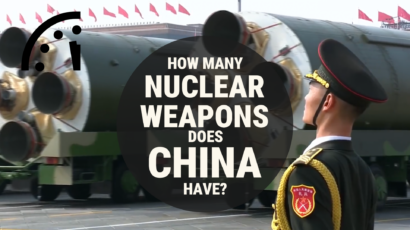In Malaysia Airlines tragedy, echoes of a US act
By Hugh Gusterson | July 27, 2014

The downing of Malaysia Airlines flight 17 over the Ukraine-Russia border has hardened Western opinion against Moscow and incited talk of a new Cold War. In view of the harsh Western reaction against Russia, it is instructive to compare this incident, which killed 298 passengers and crew, with the destruction of Iran Air flight 655 by a missile from a US warship in 1988, which killed 290 people.
Malaysia Airlines flight 17 was almost certainly shot down by Russian-backed separatists in Eastern Ukraine, using a Russian-made SA-11 air-to-ground missile. While intelligence sources in the press suggest that the separatists made a terrible mistake, thinking they were shooting down a Ukrainian military jet, many commentators have faulted the Russians for supplying such missiles to ill-trained militiamen, and for not exercising better control over their proxies fighting in Ukraine. As a New York Times news report put it, describing café opinion in the Netherlands, “Russia, everybody agreed, was the real culprit.”
Many political leaders and commentators have minced no words in condemning the Russians and their separatist allies. The New York Times opined in an editorial that “whoever unleashed a lethal missile not knowing how to distinguish between a military and a civilian plane is not only irresponsible and stupid, but a war criminal.” New York Times columnist Roger Cohen quotes a defense analyst saying, “this is murder, mass murder. Let’s call it what it is.” Petro Poroshenko, the president of Ukraine, tweeted that "MH-17 is not an incident or catastrophe, it is a terrorist attack," while Anne Applebaum, writing in the Washington Post, compared it to the Libyan government’s deliberate destruction of Pan Am flight 103 over Lockerbie, Scotland, in 1988. The same comparison to the Lockerbie bombing is made in a New York Times op-ed by French philosopher Bernard-Henri Lévy, who says that Russian President Vladimir Putin “is, in the end, wholly responsible” for this “war crime” because he armed the separatists—“undisciplined louts who know only the law of the jungle.”
Meanwhile, in the “alternate reality” created by Russian leaders and Russian media, the arrows of culpability aim in a different direction. Western media have quoted villagers sympathetic to the separatist rebels blaming Malaysia Airlines for flying over a conflict zone, and President Putin himself said “the government over whose territory this happened bears the responsibility for this terrible tragedy.”
“A proper defensive action.” In 1988, the same year as the Lockerbie bombing, a strikingly similar incident was represented quite differently in the American media. Iran Air flight 655 was shot down a few minutes after takeoff by a missile from the USS Vincennes which was, at the time, being attacked by Iranian gunboats in the Persian Gulf. Two-hundred and ninety civilians, including 66 children, died.
The United States admitted it had shot down the civilian airliner, but said it had no choice. Reagan Administration officials said the jetliner was flying outside the approved flight corridor for civilian planes; that the captain of the Vincennes could not find it in the schedule of local commercial flights; that it was going unusually fast; that it started to descend toward the Vincennes (as an attacking plane would, but a civilian flight climbing to cruising altitude would not); that US radar could not discriminate a civilian jetliner from a military jet; that the Iranian plane’s transponder emitted the signature of an F-14 fighter aircraft but no civilian signal; and that the Vincennes warned the Iranian plane seven times before firing. ''If anything, the captain could be criticized for holding his fire as long as he did,'' a navy official said.
President Reagan issued a statement describing the destruction of the civilian airliner as “a proper defensive action by the USS Vincennes.” It said, “The course of the Iranian civilian airliner was such that it was headed directly for the USS Vincennes, which was at the time engaged with five Iranian Boghammer boats that had attacked our forces. When the aircraft failed to heed repeated warnings, the Vincennes followed standing orders and widely publicized procedures, firing to protect itself against possible attack.”
Adm. William J. Crowe Jr., chairman of the Joint Chiefs of Staff, took a stronger line, saying “I don't understand the responsibility of a country that, while it is attacking other ships, making a war zone out of a certain area of the ocean…then goes ahead and flies a commercial airliner over that part of the ocean at the time that attacks and hostilities are under way.”
Vice President George H.W. Bush echoed Crowe’s position, telling the United Nations that Iran was to blame. “They allowed a civilian aircraft loaded with passengers to proceed on a path over a warship engaged in battle…That was irresponsible.”
Meanwhile, in an unusual deviation from normal diplomatic protocol, the American ambassador to London sent the captain of the Vincennes a congratulatory message. ‘‘We have received numerous letters from British citizens at the embassy here in London. These letters, without exception, are fully supportive of your actions…I join other Americans in congratulating you for having done your duty.”
In an editorial two days after the downing of the plane, the New York Times proclaimed “if the Navy's account of events turns out even approximately correct, Captain Will Rogers of the Vincennes had little choice…The episode also raises stern questions for Iran. If the Navy's version of events is largely correct, blame may lie with the Iran Air pilot for failing to acknowledge the ship's warnings and flying outside the civilian corridor. Iran, too, may bear responsibility for failing to warn civilian planes away from the combat zone of an action it had initiated.”
While a US Navy inquiry recommended that a single mid-level operations officer on the Vincennes should be censured for misinterpreting computer data, the secretary of defense disregarded the report and no American navy personnel were disciplined for this incident in which 290 civilians were killed.
However, within a month, an official inquiry, leaked to the New York Times, revealed that almost everything the American people were initially told about the incident was untrue. Columnist Anthony Lewis summarized the report’s conclusions: far from being outside the civilian flight path, “the Airbus was well within the commercial corridor when hit by the Vincennes’ missile.” Also, “the Airbus was travelling much more slowly” than the 450 knots claimed by the Navy, and “the Airbus was not descending. It was not at 7,500 feet, as the first Pentagon statements had it, but at 12,000—and about to climb.” And, while US officials had said the captain of the Vincennes could not find any listing of the civilian flight, “it was a regularly scheduled flight…listed in a printed schedule of commercial flights that some US warships in the Persian Gulf had aboard. The Vincennes crew either didn't have the schedule or didn't look at it.” In the end it was determined that the transponder signal supposedly identifying the Airbus as an F-14 came from a different plane elsewhere.
An investigation by the International Civil Aviation Organization a few months later found that the Vincennes attempted to hail the airliner on military frequencies the airliner could not receive, and that “American warships in the gulf had no equipment that allowed them to monitor civilian air traffic control radio frequencies, and thus no means of hearing the many radio transmissions between Iran Air flight 655 and air traffic controllers that would have identified the aircraft to the Vincennes's crew.” Rather than fault Iran for flying a civilian jet over a naval firefight, it faulted the United States for initiating military operations underneath civilian airspace without making sure it could monitor civilian air traffic control.
Finally, four years later, a report by ABC News’ Nightline disclosed that the Reagan Administration had concealed from the American people that the Vincennes was operating illegally in Iranian territorial waters, trying to provoke attack by Iranian gunboats, when it shot down the Airbus.
Blaming the victims. If nothing else, these two tragedies remind us that warfare invariably involves the killing of innocent civilians. As the US relationship with Russia deteriorates and pundits call for tough measures against Putin, it is easy to attribute the downing of Malaysia Airlines flight 17 solely to the moral failings of the Russians described in the New York Times as “undisciplined louts who know only the law of the jungle.” But the sad fate of Iran Air flight 655 reminds us that the United States, too, has shot innocent civilians out of the air.
We like to think that smart weapons have ushered in a new era of immaculate warfare in which only the deserving will die. This is one of the grand illusions of our time. In the era of drone warfare, Americans are particularly prone to this hubris. But the humans who operate smart weapons are often dumb. Mistakes are made. Intelligence is faulty. Chains of command break. People with weapons get angry. Civilians die.
Then come the lies and excuses.
It is striking, comparing these incidents, that Admiral Crowe and George H.W. Bush in 1988, and Vladimir Putin in 2014, all sound as if they are reading from the same script. This script blames airlines for going about their normal business, authorized by international aviation authorities, rather than those in uniform who carelessly shoot down their civilian planes. This special pleading and victim-blaming is an equal opportunity reflex for leaders of democracies and autocracies alike. Regardless of the political system that produced them, national security officials reach opportunistically for arguments that exculpate their own military forces. “It is not at all unusual for nations to wax indignant and jingoistic when they make tragic mistakes,” observed New York Times columnist Anthony Lewis.
To its credit, the New York Times eventually got to the bottom of the Vincennes story. Having originally aided and abetted the Reagan Administration’s misrepresentations of the incident, it set the record straight. We can only hope that there are Russian journalists who will show similar commitment to their vocation. And we can wish that the New York Times editorial writer who wrote last week that “whoever unleashed a lethal missile not knowing how to distinguish between a military and a civilian plane is not only irresponsible and stupid, but a war criminal” had a longer memory.
It took eight years, but the United States did eventually compensate the victims of its mistake. In 1996, while refusing to apologize to Iran or admit blame, Washington paid $61.8 million in “ex gratia” compensation to the relatives of those it had killed. Let’s hope that someone will do the same for those aboard Malaysia Airlines flight 17, and that we will finally learn that war is never clean.
Together, we make the world safer.
The Bulletin elevates expert voices above the noise. But as an independent nonprofit organization, our operations depend on the support of readers like you. Help us continue to deliver quality journalism that holds leaders accountable. Your support of our work at any level is important. In return, we promise our coverage will be understandable, influential, vigilant, solution-oriented, and fair-minded. Together we can make a difference.
Topics: Columnists, Special Topics, Technology and Security















